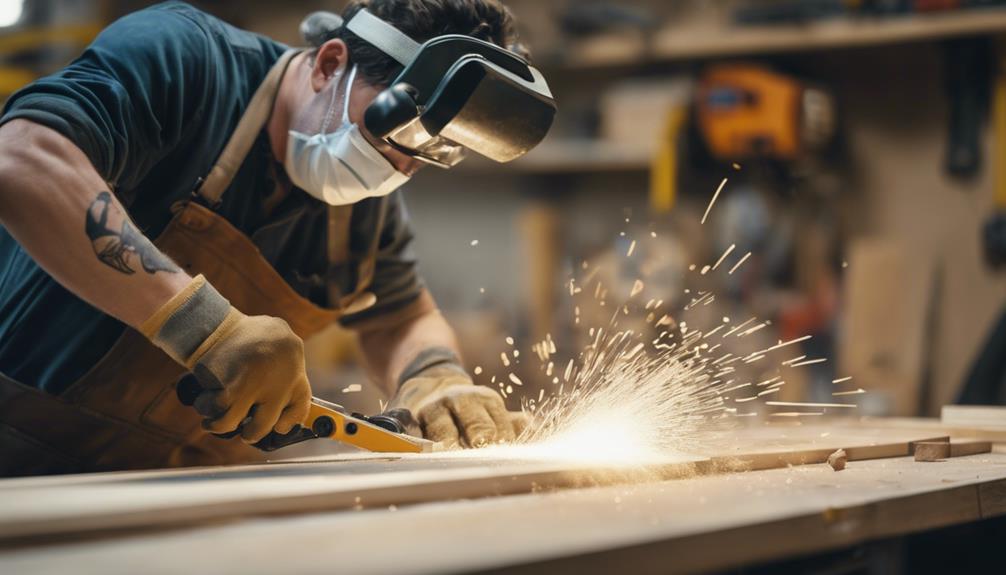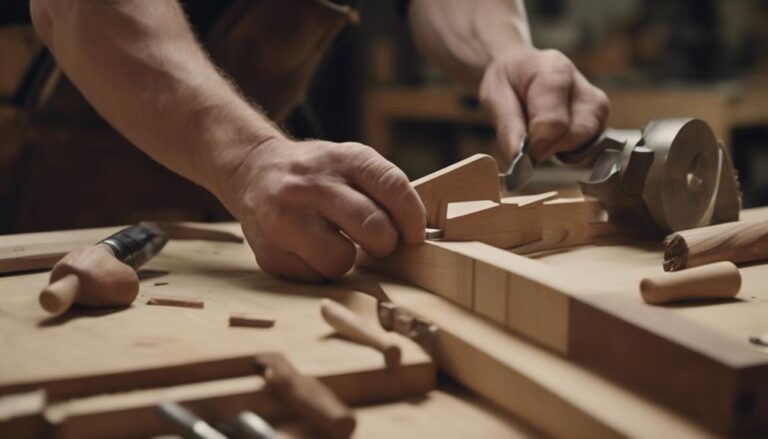In the realm of timber joinery in South Africa, prioritising safety is not just a recommendation but a non-negotiable standard. With a focus on personal protective equipment, machinery operation guidelines, and the proper handling of timber materials, these top 4 safety rules aim to create a secure working environment for all involved. The meticulous attention to safety measures not only safeguards individuals but also guarantees the smooth operation of projects.
Understanding and implementing these regulations are key to fostering a culture of safety and excellence in the timber joinery sector.
Prioritising safety in the field of timber joinery in South Africa is crucial. By emphasizing the importance of personal protective equipment, adhering to machinery operation guidelines, and handling timber materials correctly, these top 4 safety rules ensure a secure working environment for everyone involved. Through careful attention to safety measures, individuals are protected, and projects run smoothly.
It is essential to comprehend and apply these regulations to cultivate a culture of safety and excellence within the timber joinery sector.
Key Takeaways
What are the essential safety rules for Timber Joinery in South Africa? Sticking to the Top 4 Timber Joinery Safety Rules is vital for a safe working environment. Using proper safety gear, operating machinery correctly, and handling timber materials with care are key to reducing risks and preventing accidents. Strict adherence to these rules ensures a secure environment for all in the timber joinery industry. Remember, safety is paramount in timber joinery!
Importance of Safety Measures
Importance of Safety Measures
Ensuring stringent safety measures in timber joinery operations is paramount to safeguarding the well-being of workers and mitigating the risks associated with the industry. Education and training play a fundamental role in instilling a culture of safety within timber joinery workplaces. By providing comprehensive training on safety protocols, workers are equipped with the knowledge and skills necessary to identify and mitigate potential hazards effectively.
Investing in education and training not only enhances the safety of the work environment but also cultivates a sense of professionalism and responsibility among employees. Workers who are well-trained in safety practices are more likely to adhere to regulations, reducing the likelihood of accidents and injuries. Moreover, continuous education ensures that employees stay updated on the latest safety procedures and technologies, further improving the overall safety standards within timber joinery operations.
Required Personal Protective Equipment
Appropriate personal protective equipment (PPE) is a non-negotiable requirement for individuals engaged in timber joinery work in South Africa. This gear includes hard hats, safety harnesses, gloves, boots, overalls, goggles, and earplugs. These items are essential for safeguarding workers against common hazards like falling objects, sharp tools, and dust.
PPE should be worn consistently to mitigate the risk of accidents and ensure compliance with safety standards. To maintain a safe working environment, it is crucial that the PPE is properly fitted, comfortable, and functional. Regular maintenance, including inspections and replacements, is necessary to uphold the effectiveness of the protective gear.
Neglecting to wear the required PPE not only jeopardises the safety of workers but also leads to potential injuries and violations of safety regulations. By prioritising PPE maintenance, comfort, and functionality, and conducting compliance checks, timber joinery workers can significantly reduce the likelihood of workplace accidents and injuries.
Machinery Operation Guidelines
Machinery Operation Guidelines
Adherence to stringent machinery operation guidelines is imperative for ensuring the safety and efficiency of timber joinery processes in South Africa. Machine maintenance and safety checks are crucial aspects of this adherence. Regular maintenance and inspection of machinery help prevent accidents and ensure the smooth operation of timber joinery equipment. Moreover, all machinery operators must undergo formal training and certification to guarantee safe operation within the industry.
Proper operator training and certification are fundamental requirements to uphold safety standards in timber joinery settings. Operators should always wear appropriate personal protective equipment, such as gloves and goggles, when operating machinery to minimise risks. Additionally, strict adherence to safety protocols during machinery operation is vital to minimise the risk of injuries and accidents. Establishing emergency response procedures further enhances safety measures, ensuring swift and effective responses in case of unforeseen incidents. Deviations from safety guidelines in machinery operation can have severe consequences, underscoring the critical importance of following safety rules in timber joinery.
Proper Handling of Timber Materials
Regular inspection of timber materials is essential to maintain safety standards and ensure structural integrity in timber joinery processes. To prevent injuries, always wear appropriate personal protective equipment (PPE) like gloves and goggles when handling timber materials. Using proper lifting techniques is crucial to avoid strain or injury when moving heavy timber pieces. Inspect timber materials for defects or damage before handling to ensure structural integrity and safety. Additionally, store timber materials in a dry, well-ventilated area to prevent warping, rot, or mould growth. It is important to follow manufacturer guidelines and recommendations for the safe handling and storage of timber materials to maintain quality and safety standards effectively. The table below summarises key points for proper handling of timber materials:
| Key Points | Details |
|---|---|
| Wear PPE | Always wear gloves and goggles to prevent injuries when handling timber materials. |
| Proper Lifting Techniques | Use correct lifting techniques to avoid strain or injury when moving heavy timber pieces. |
| Inspection for Defects | Inspect timber materials for defects or damage to ensure structural integrity and safety. |
Conclusion
To sum up, sticking to the Top 4 Timber Joinery Safety Rules in South Africa is crucial for keeping workers safe and well in the timber joinery industry. By making sure to use safety gear, operate machinery correctly, and handle timber materials the right way, we can reduce risks and avoid accidents. It's vital for everyone in timber joinery to follow these safety rules strictly for a secure working environment.
If you ever need assistance, don't hesitate to reach out to Holzfleck. Remember, safety comes first in timber joinery!
Take a moment to shop for Wooden Products on our site, and explore the quality we offer.
If you're interested, you can also request a quote from us for your timber joinery needs.
Stay safe and keep crafting with care!




